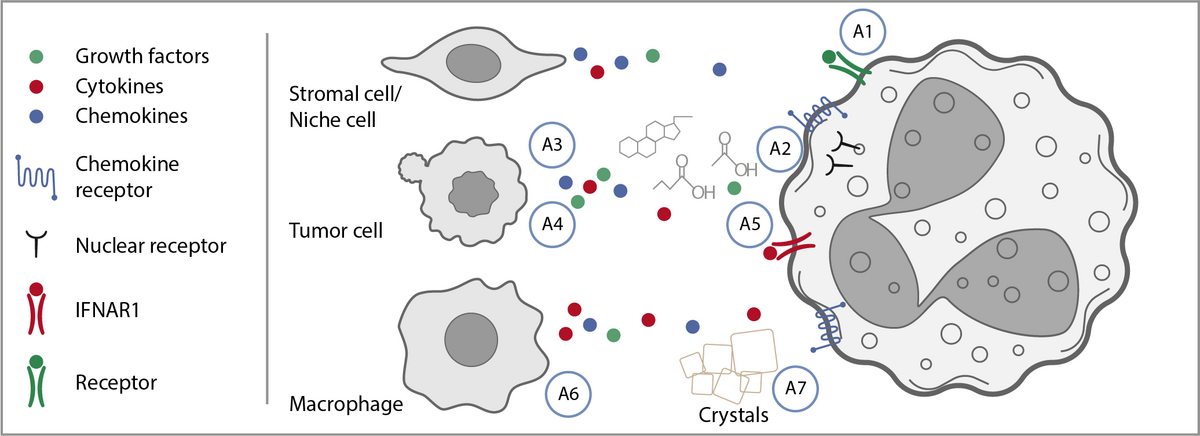Neutrophils sense and respond to various types of signals generated within tissues. Such signalling occurs during steady state or inflammation and affects production as well as function of peripheral neutrophils. As an example, neutrophils contributing to tissue repair in the liver re-enter the circulation, take a sojourn in the lungs where they are reprogrammed to up-regulate CXCR4 thus rendered prone to clearance in the bone marrow. Similarly, during low dose endotoxinaemia, instructed lung neutrophils locally change their chemokine receptor profile and release neutrophil extracellular traps (NETs). A recent study revealed the plasticity of neutrophils within tissues during steady state, thus enabling neutrophils to acquire different functional states depending on tissue cues. These are just three examples of how the local microenvironment can shape neutrophil phenotype and function. However, the importance of the microenvironment can be extended to metabolic alterations including hyperlipidaemia and hyperglycaemia, as well as to inflammation and cancer. In project area A, several projects aim at studying the importance of extracellular signals derived from the environment for neutrophil production and function.

